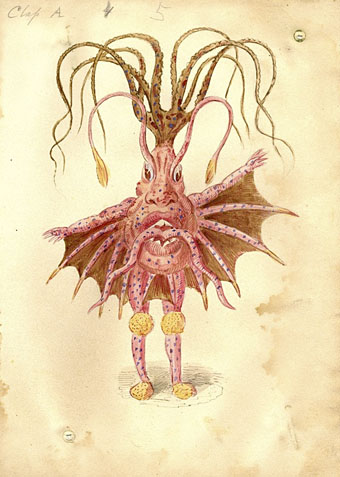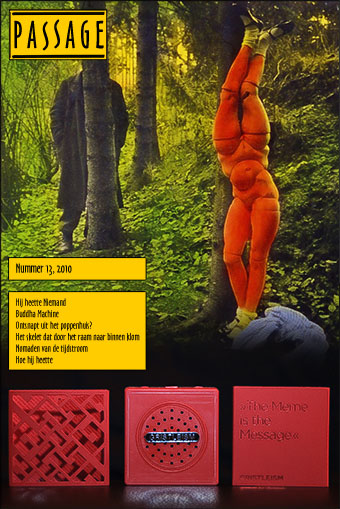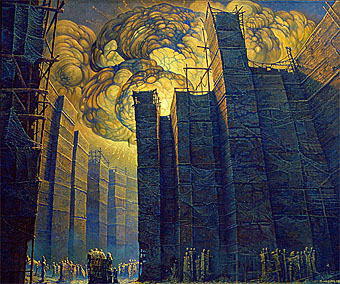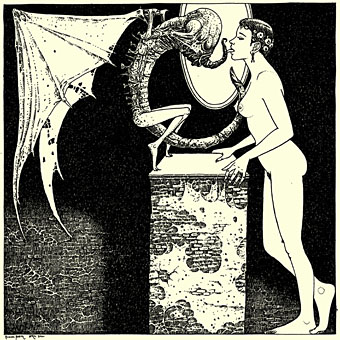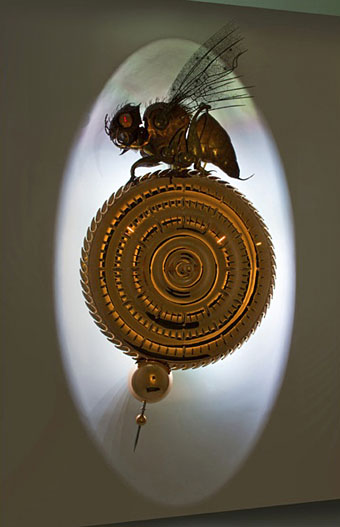
The Midsummer Chronophage.
John C Taylor’s Corpus Chronophage—the extraordinary mechanical clock surmounted by a time-devouring monster—was featured here following news of its installation at Corpus Christi College, Cambridge, in 2008. Two years later its creator is ready to unveil a new clock which he calls The Midsummer Chronophage.
The Midsummer Chronophage pays homage to the 18th century clockmaker John Harrison, inventor of the marine chronometer and the ‘grasshopper’ escapement, a low-friction mechanism for converting pendulum motion into rotational motion. The Midsummer Chronophage takes the grasshopper escapement out of the clock and presents it on the outside as a sculpture. The mythical creature is also the world’s largest grasshopper escapement.
The face of The Midsummer Chronophage is a 24 carat gold-plated steel disc almost 1.5M in diameter, polished to resemble a pond of liquid metal with ripples that allude to the Big Bang. It was created by a series of underwater explosions.
The Midsummer Chronophage has no hands or numbers but displays time by aligning slits in discs behind the clock face back lit with blue LEDS; these slits are arranged in three concentric rings displaying hours, minutes and seconds.
Dr Taylor’s new clock can be seen at London’s Masterpiece Fair from 23rd of June. For those outside London there are more pictures of the device here, and videos of the Corpus Clock in action here.
Previously on { feuilleton }
• Andrew Chase’s steel cheetah
• Another Midsummer Night
• The Corpus Clock
• A Midsummer Night’s Dadd
• William Heath Robinson’s Midsummer Night’s Dream
• The Bowes Swan



